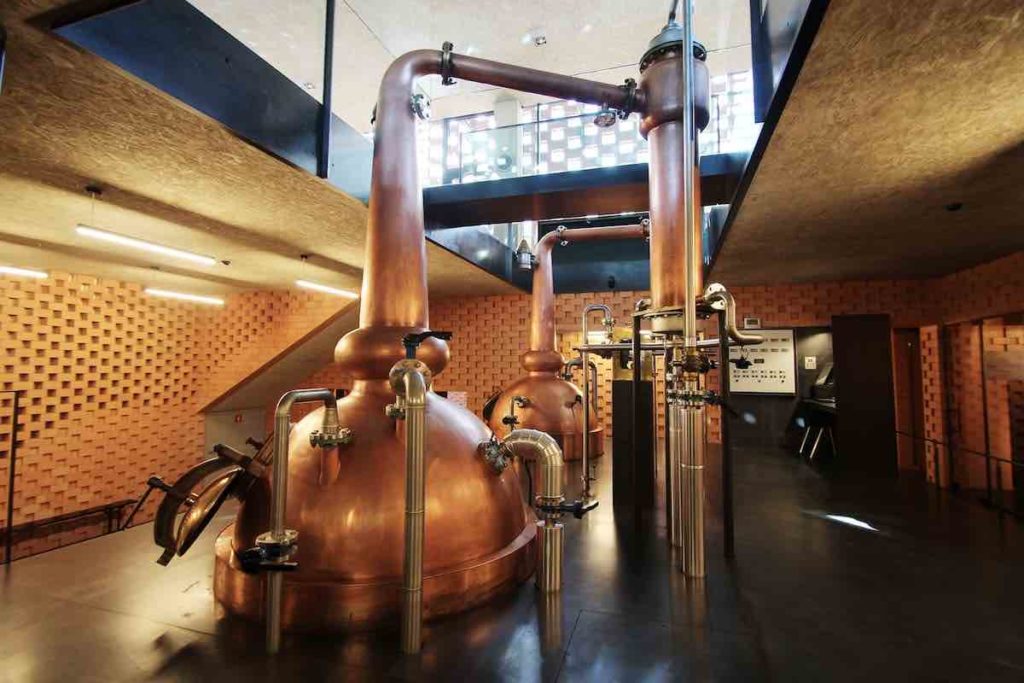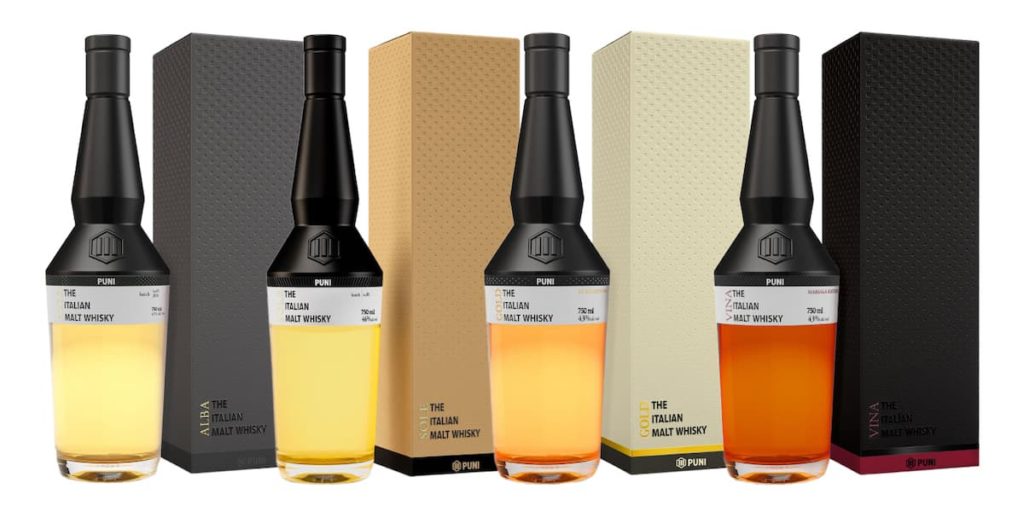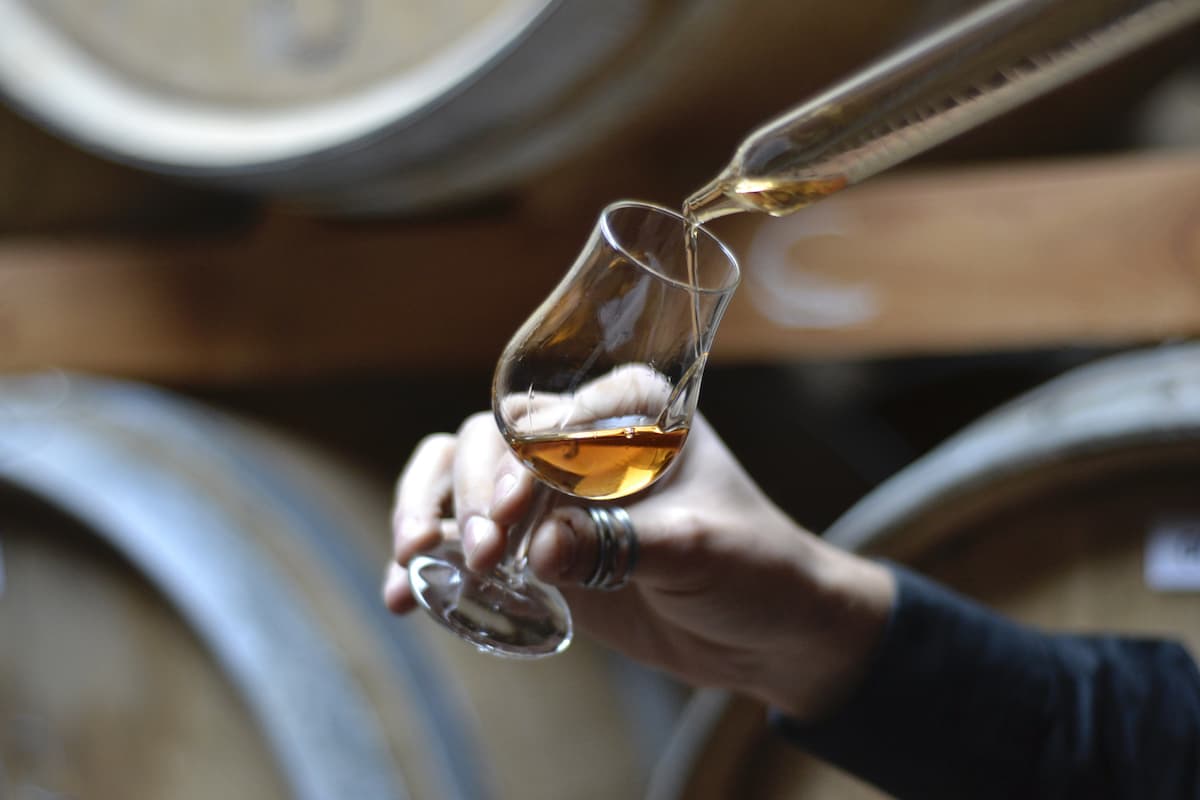Wines, cheeses, oils, vinegars, and cured meats with mellifluous names—Italy has no shortage of delicious exports. Whisky, however, has not been among them—until now.
Puni Italian Malt Whisky made its U.S. landfall this October. Though new to American drinkers, Puni has been operating since 2010 at a family-run distillery in the Italian Alps, where all of its milling, mashing, distilling, and aging occurs.
Naturally, the story of how Puni came to be begins with wine. In the 1990s, family patriarch Albrecht Ebensperger completed all three sommelier courses, and was exposed to the world of whisky in the process. The elder Ebensperger’s enthusiasm soon spread to the rest of the family.
“After years of tasting, learning and immersing ourselves in the world of whisky, we wanted to make the transition from whisky-lovers to whisky-makers,” says his son Jonas Ebensperger, who serves as Puni’s distiller. “When we decided to build the first whisky distillery in Italy in 2010, it was our expressed goal to create a new whisky of exceptional quality.”

From Scotland to Tyrol
Puni, named for a river that runs near its home base of Glorenza in South Tyrol, shares more than just a mountainous elevation with Scottish Highland distillers. Its imposingly modern facility—which would be at home at the Fondazione Prada in Milan—is equipped with traditional Scottish pot stills, which were designed in collaboration with Scottish engineers. The family also enlisted Harry Cockburn, a 45-year veteran of the scotch industry and former distillery manager for Bowmore, Auchentoshan, and Glen Garioch, as a chief consultant.
However, Puni did not simply copy-and-paste a scotch whisky distillery into the Italian Alps. For one thing, they’ve rejected the single malt route, and instead distill their whiskies from wheat, rye, and malted barley. Those first two ingredients are sourced locally from the Venosta Valley, which has been noted for its rye cultivation since the Middle Ages. Puni sources its malt from Italy and Bavaria, or in the case of peated malt, Scotland.
A long and slow fermentation is favored at Puni, which along with its tall, slender stills, helps to create what Ebensperger describes as the house style. “We are able to obtain a very balanced and fruity new-make spirit,” he says. “It carries the distinctive flavors of fresh malt, paired with fantastic notes of apple and pear.”

Puni also employs a unique heating system in its distillation process. Rather than using steam to run its stills, they rely on overheated water, which gives the distiller greater control over temperature and makes it easier to collect the most desirable parts of the distillate run.
The Alpine climate plays a role in shaping the whisky as well. The Venosta Valley experiences hot summers and cold winters, a contrast that accelerates the spirit’s aging process.
“We can produce relatively young whiskies which already sport a complex and mellow flavor profile,” Ebensperger says. “We could not make our whisky anywhere else and yield the same results.”
Italian Whiskies, Past and Present
The Puni range consists of four expressions: Gold, Alba, Vina and Sole. The Gold flagship is aged in ex-bourbon barrels, and Sole is finished for two years in Pedro Ximénez sherry casks. But its other two expressions make use of uniquely Italian materials: Limited release Vina is matured in Sicilian Marsala casks, and Alba is matured in Sicilian Marsala casks prior to a finish in ex-Islay scotch casks. Earlier expressions have used Italian Pinot Nero casks for maturation, and Ebensperger plans to introduce more Italian wine cask maturations and finishes in the future.

Puni may be Italy’s first whisky distillery, but it’s not the first time “whisky” has been produced on the peninsula. However, Ebensperger explains why Italy’s earlier attempts at whisky-making deserve a pair of quotations marks: Many were experiments conducted during American Prohibition to make up for the lack of whisky coming into Italy. These Italian “whiskies” were often pomace (grape skin) distillate infused with aromas, or even just unaged grain spirit. Some entrepreneurial Italians even sourced whisky from the U.K. and bottled it domestically to sell as “Italian whisky.” A handful of these bottles exist today as collectibles.
These dubious early attempts indicate that an Italian appetite for whisky does exist. Ebensperger says that the domestic market is dominated by Glen Grant 5 Year Old, which Italians favor for its lightness.
A Taste Test
While Puni has taken the Italian whisky palate into account, it also seeks to challenge it.
“Most people seem to prefer a fruity and smooth taste profile,” Ebensperger says. “However, we see that there is an uptick in interest for heaver, wine-cask matured or even peated whiskies, especially in winter.”

True to Ebensperger’s word, I found Puni Gold to be soft and gentle in body, with a cereal-heavy palate that made me think of warm pie crust and berries. And yet, it wasn’t a lightweight; the end of the experience whisked in a rewarding amount of oak spice and rye.
Anxious to discover the effects of a marsala cask on whisky, I also poured myself a glass of Puni Vina. While still a light-bodied spirit with a cereal-heavy palate, it tapped into a rich, dry vein of marsala that turned almost savory at the end, where it was capped off by a touch of smoke and an unexpected but rewarding slash of spice. At the finish I couldn’t help but imagine the end of dinner at an Italian restaurant, soaking up the last remnants of a rich marsala sauce with a tear of flaky bread.
If Italy’s first true whisky distillery is any indication, the Italians may soon be flexing their cultural prowess over yet another category of things to eat and drink. And to that, I say salut!



